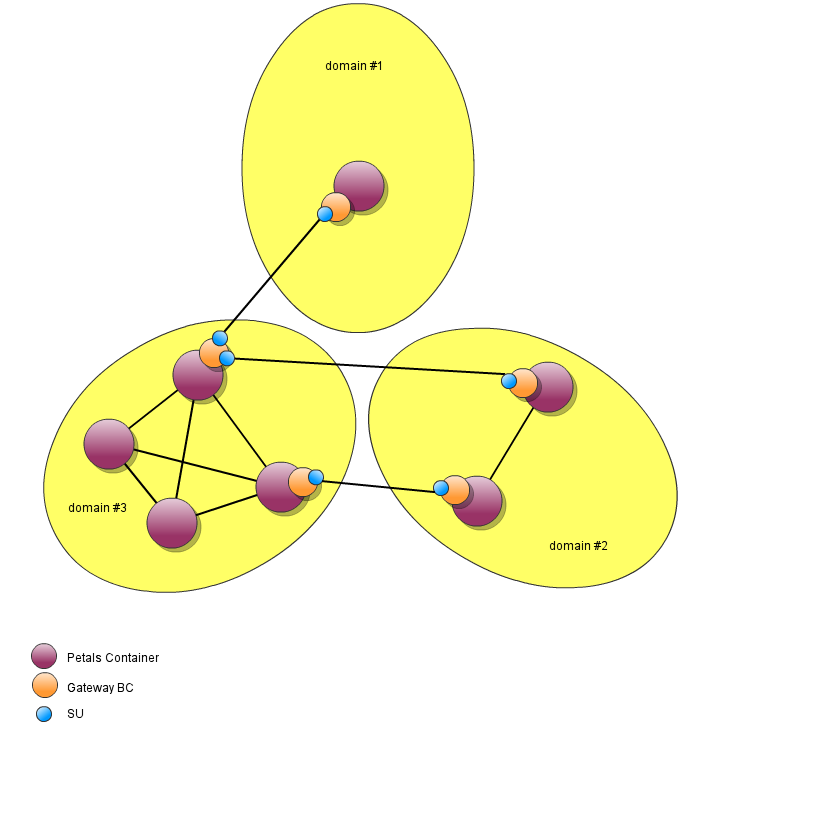FeaturesThe component BC Gateway enables to create secured (encrypted and authenticated) bridges between Petals domains governed by separate entities.
From the point of view of this BC, one (or several in case of HA) container in each Petals domain will either play the role of provider domain or consumer domain:
By default the Gateway BC takes care of reconnecting in case of disconnection, polling for changes in the activated endpoints to keep the consumer domain a mirror of the provider domain and it is possible to rewrite propagated services names in the consumer domain if needed. By service, we mean one as defined in a WSDL: it is specified by an interface name and a service name.
Service Units ConfigurationIn terms of configuration (i.e., definition of Service Units), this results in two different artefacts: Consumes and Provides SUs. The particularity of the Gateway BC is that, while Consumes SUs explicitly define which are the consumed services that are going to be propagated from their domain, Provides SUs do not have to (but can) define the services that are going to be propagated to their domain: these are inferred based on the services actually propagated by the provider domain. Component Transport ListenersTechnically, the component onto which the Consumes SUs are deployed must define how to listen to incoming connections (on a host and TCP port currently) from Provides SUs. |
Petals-BC-Gateway Documentations Contributors
No contributors found for: authors on selected page(s)
|
Petals Documentation > Petals ESB > Petals Components > Components User Guide > Petals-BC-Gateway
